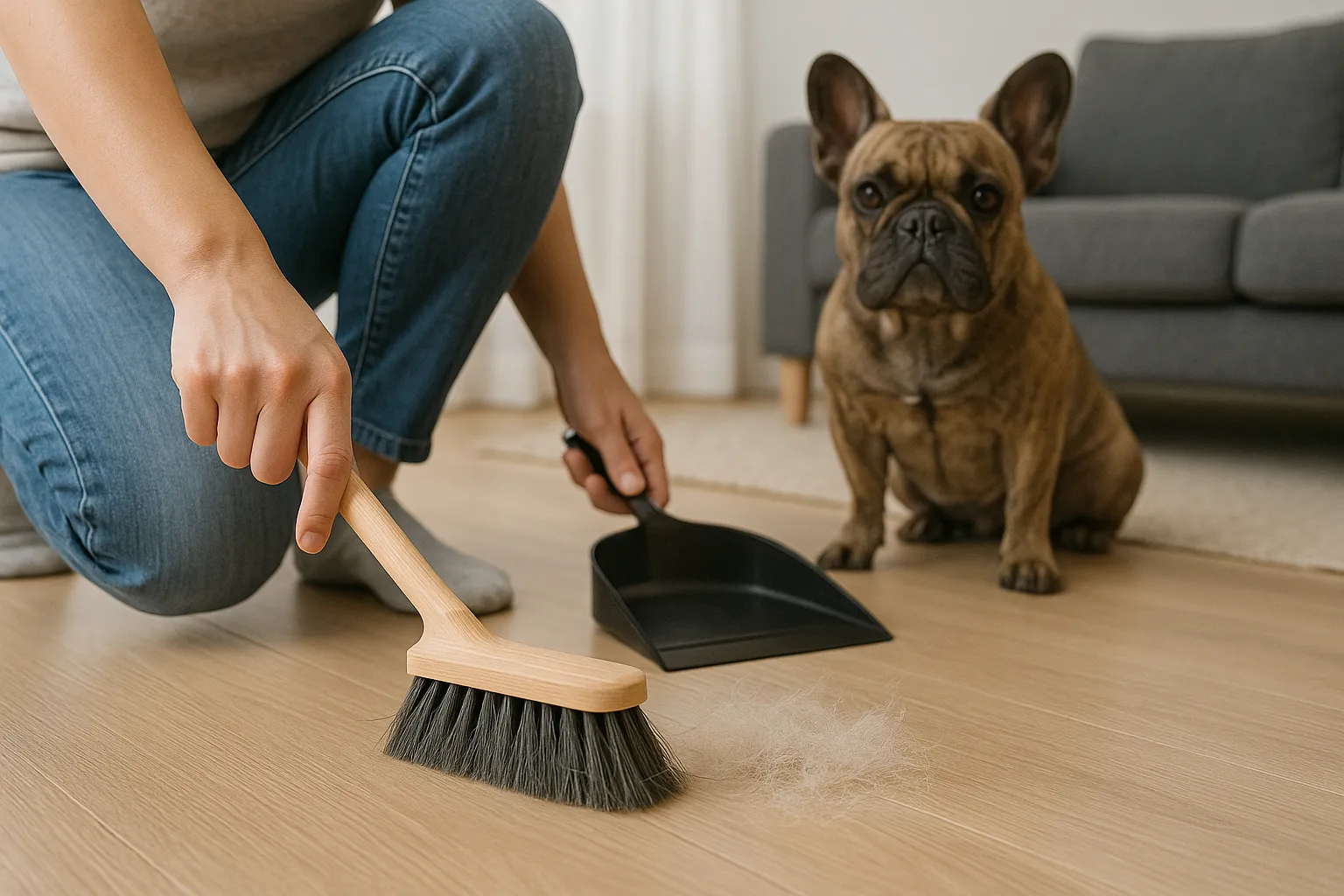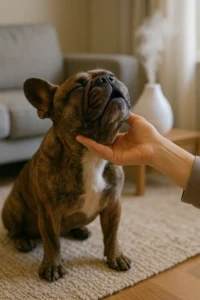This page contains affiliated links to support our website
Quick answer
Excess hair fall in a French Bulldog usually traces to seasonal coat changes, nutrition gaps, parasites or allergies, hormonal issues, or stress plus imperfect grooming rhythm. The fastest wins are weekly brushing, appropriate bathing, complete-and-balanced nutrition, and strict flea prevention. Persistent itch, bald patches, or systemic changes warrant a veterinary exam and possible lab work. (American Kennel Club, WSAVA, Vca)
Introduction
Owners often expect a smooth-coated breed to shed less, then meet a couch covered in short hairs. This article gives an evidence-based roadmap: what’s normal versus excessive, the five most common causes, and a simple plan to reduce fallout. Readers also get a quick table to spot clues at home and clear signals for when to book a vet visit. (American Kennel Club)
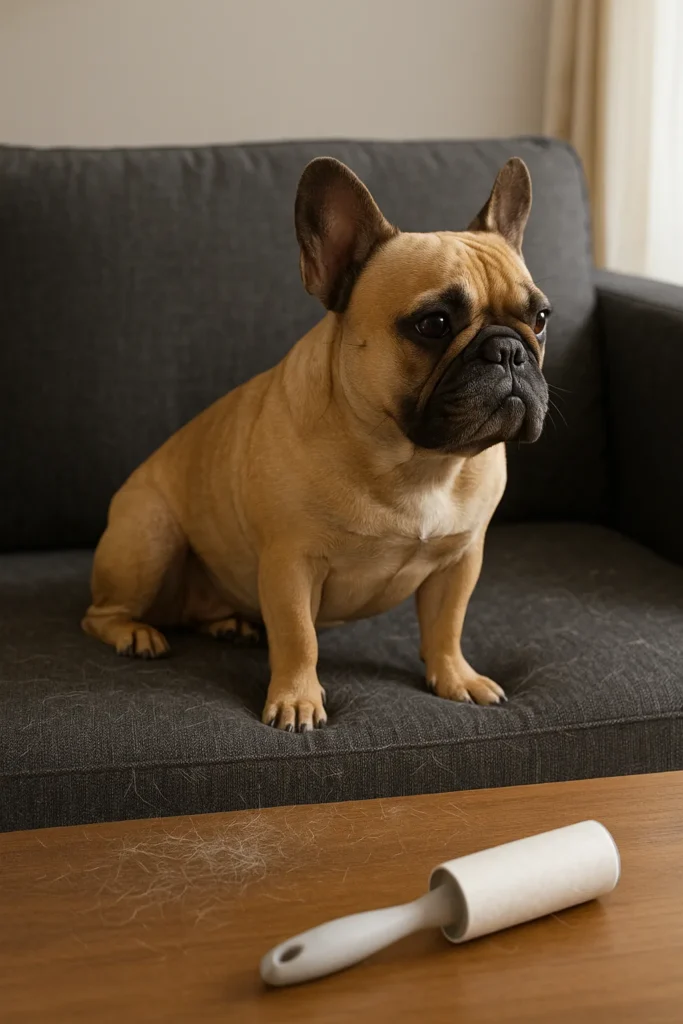
Table of Contents
- What counts as “too much” shedding
- Five reasons Frenchies drop extra hair
- Fix-it playbook (grooming, diet, prevention, labs)
- Scan-friendly comparison table
- FAQs
- References
What counts as “too much” shedding?
Most dogs cycle hair year-round with seasonal spikes; indoor lighting and climate control can blur spring/fall patterns so hair seems constant. A short coat still molts, but excessive shed plus itch, odor, sores, weight change, or lethargy suggests disease rather than routine grooming needs. That’s the point to escalate from home care to diagnostics. (American Kennel Club)
The 5 Reasons Your Frenchie Is Shedding
1) Seasonal or photoperiod shifts
Even smooth coats respond to daylight: many dogs shed more in spring and again in fall. Indoor life may stretch that cycle, creating the impression of permanent shed. A weekly brush and periodic de-shedding session usually tame loose hair without over-bathing, which can dry skin and worsen fallout. (American Kennel Club)
2) Nutrition gaps or abrupt diet switches
Incomplete diets, poor storage, or sudden food changes can dull the coat and increase hair drop. Start with a complete-and-balanced recipe from a reputable maker, follow gradual transitions over 7–10 days, and log response. The WSAVA checklist is a practical tool to audit brand credibility and feeding practices at home. (WSAVA)
3) Parasites and allergic skin disease
Flea allergy dermatitis commonly causes tail-base itch, hair loss, and secondary infection; strict prevention is essential even for indoor dogs. Environmental allergies (atopic dermatitis) can add face-paw-ear itch and recurrent flares that thin the coat over time, requiring a tailored veterinary plan. (Vca, MSD Veterinary Manual)
4) Hormonal/endocrine disorders
Hypothyroidism can present with a dull coat, “rat-tail” appearance, symmetric thinning, weight gain, and lethargy. Shampoo changes won’t solve hormonal hair loss; diagnosis relies on history, exam, and thyroid testing, followed by long-term medical management under a veterinarian. (AAHA)
5) Stress, over-bathing, or a weak grooming rhythm
Anxiety, friction from collars or harnesses, harsh shampoos, or infrequent brushing can push more hairs into the shed cycle. Set a gentle cadence: weekly brush for smooth coats, wipe downs between, and bathing aligned to lifestyle rather than a fixed calendar to protect skin oils. (Ask A Vet)
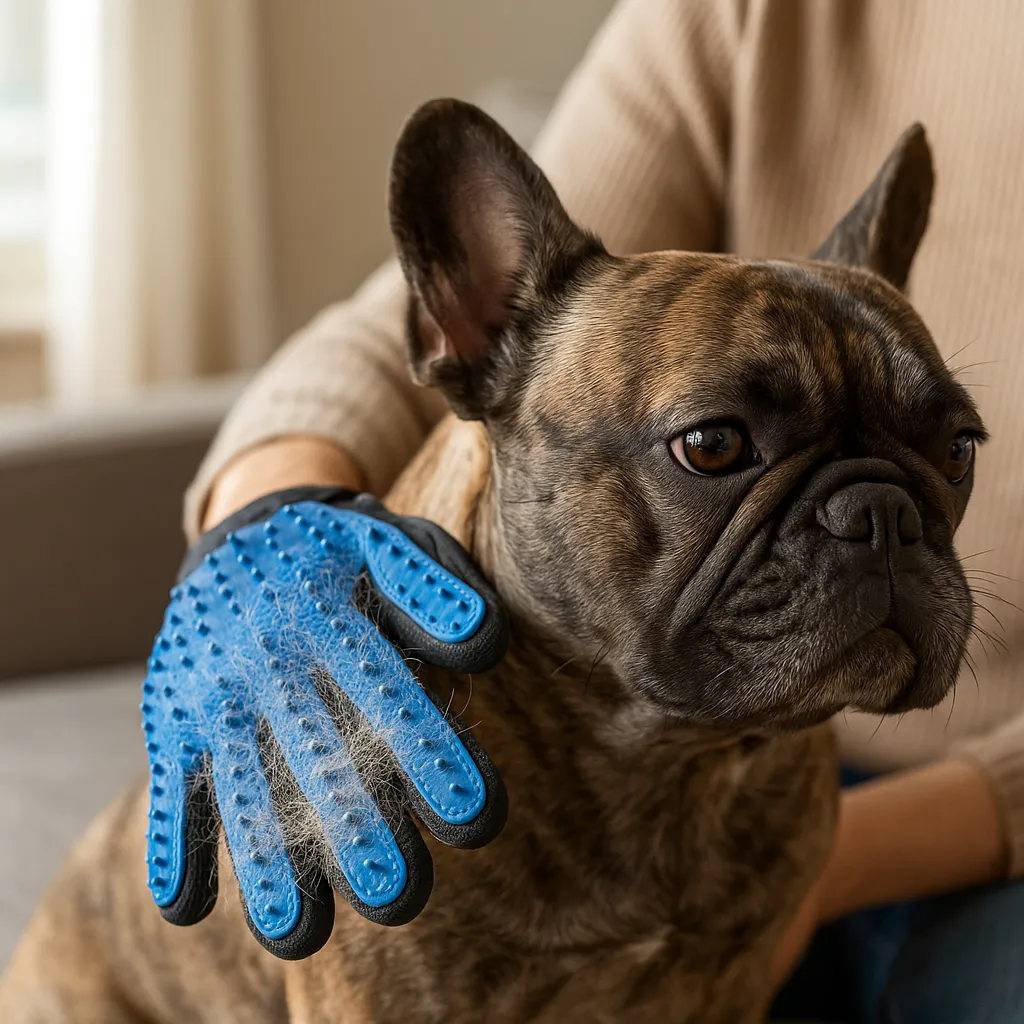
Fix-It Playbook (What Actually Helps)
Grooming that works for smooth coats
Use a rubber curry or grooming glove weekly to lift loose hairs and stimulate skin, then a soft brush to finish. Bathe with a mild dog shampoo as needed, not excessively, and dry thoroughly—especially in skin folds—to avoid irritation that can increase shed and scratching. (American Kennel Club)
Check this grooming kit on amazon
Nutrition checklist (owner-friendly)
Confirm the food is complete and balanced, note manufacturer contactability and quality-control claims, measure portions, and keep treats under 10% of daily calories. Transition diets gradually and track coat shine and hair fall. If concerns persist, discuss targeted omega-3s within a veterinarian-guided plan. (WSAVA)
Parasite prevention & allergy pathway
Maintain year-round flea control; check for “flea dirt” if tail-base itch appears. If pruritus continues despite prevention, ask about an atopy workup and long-term management options (topicals, meds, immunotherapy) to stabilize the skin barrier and reduce chronic hair loss. (Vca, MSD Veterinary Manual)
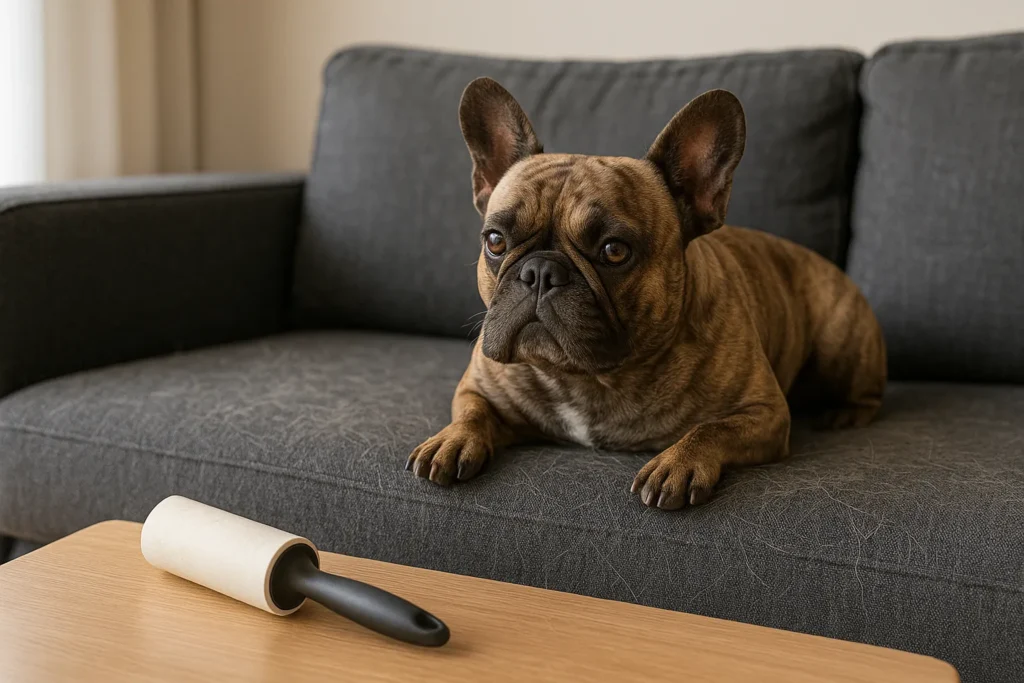
Comparison Table — Cause → Clues → First Steps
| Cause | Clues you’ll notice | First steps |
|---|---|---|
| Seasonal molt | More hair on bedding/brush; no major itch | Brush 2–3×/week; avoid over-bathing. (American Kennel Club) |
| Diet issue | Dull coat after food change; soft stools | Use WSAVA checklist; transition food slowly. (WSAVA) |
| Flea allergy | Tail-base itch; “flea dirt”; hot spots | Start strict prevention; vet if signs persist. (Vca) |
| Atopic dermatitis | Face/paws/ears itch; recurrent flares | Vet dermatology plan; allergen control. (MSD Veterinary Manual) |
| Hypothyroidism | Symmetric thinning; weight gain; lethargy | Exam + thyroid panel; medical therapy. (AAHA) |
FAQs
Do French Bulldogs shed a lot?
They’re short-coated but still cycle hair. Seasonal increases are common, and indoor life may blur the calendar. A simple routine—weekly brushing and sensible bathing—usually keeps things manageable unless medical issues are present. (American Kennel Club)
How often should a Frenchie be bathed?
It depends on lifestyle and skin. Bathing too frequently can strip natural oils; aim for “as needed,” paired with routine brushing and thorough drying to protect the barrier. Ask your vet if skin disease is suspected. (Ask A Vet)
When should someone worry?
Escalate when hair loss is patchy or symmetric with itch, odor, sores, weight change, or lethargy. Those patterns point to parasites, allergies, or endocrine disease and deserve a veterinary workup rather than only grooming tweaks. (Vca, AAHA)
Conclusion
The question “why is my Frenchie shedding so much?” has a practical answer: normal cycles, diet quality, skin disease, hormones, and daily care all play roles. Start with weekly brushing, right-sized bathing, and verified nutrition; maintain year-round flea control; and pursue testing if red flags appear. With a steady routine and timely vet input, most coats rebound quickly. (American Kennel Club, WSAVA)
References
- AKC — Dog Shedding: What to Expect & Manage. (American Kennel Club)
- WSAVA — Global Nutrition Guidelines & Checklist. (WSAVA)
- VCA — Flea Allergy Dermatitis. (Vca)
- MSD Vet Manual — Canine Atopic Dermatitis. (MSD Veterinary Manual)
- AAHA — Hypothyroidism: Diagnostic Testing & Monitoring. (AAHA)
- Ask-A-Vet — Bathing Frequency & Skin Tips. (Ask A Vet)
